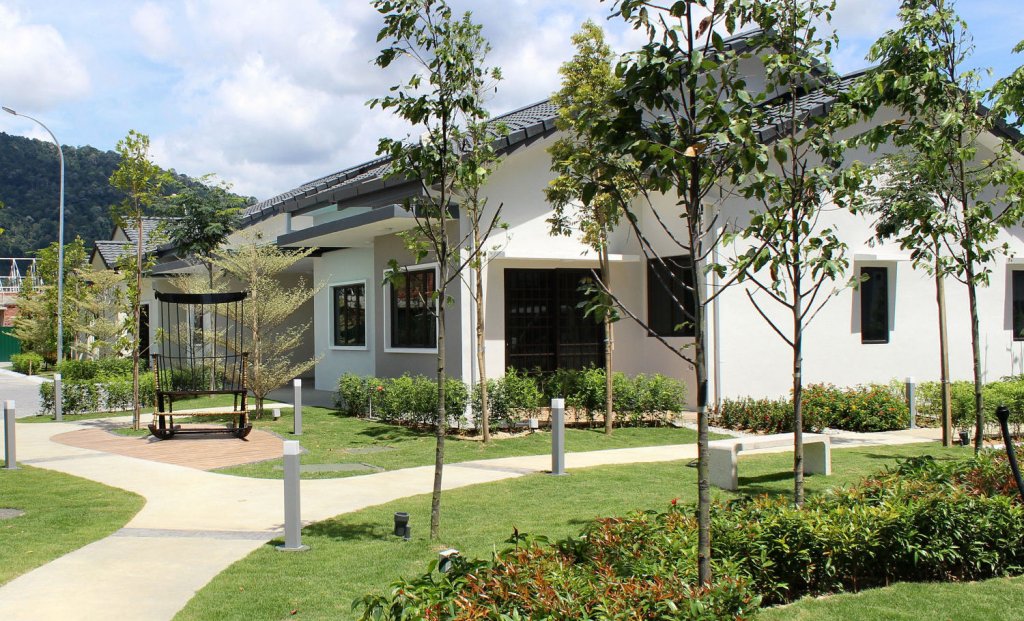
Definition of Retirement Village

A retirement village is a complex of dwellings that provides housing to residents over 55 or full-time retirees. Generally, residents can lead independent lives in their homes while enjoying various shared facilities and community through village life.
Retirement villages have become increasingly popular in recent years as an attractive option for older individuals who wish to maintain an independent lifestyle while enjoying the benefits of communal living. Retirement villages may offer a range of housing options, including apartments, villas, townhouses, or bungalows, designed to meet the needs and preferences of different residents.
In addition to providing a safe and secure living environment, retirement villages often offer a wide range of facilities and services, such as recreational areas, swimming pools, fitness centers, libraries, and medical facilities, which are all designed to enhance the quality of life of the residents.
In many retirement villages, residents are also offered access to various social and recreational activities, such as cultural events, day trips, and educational programs, which are organized to foster a sense of community and belonging. This social aspect of retirement villages is often one of the key benefits cited by residents, as it allows them to connect with like-minded individuals and build meaningful relationships.
Retirement villages may be operated by private companies or non-profit organizations, and fees for living in a retirement village can vary depending on the location, the type of accommodation, and the facilities and services on offer. While retirement villages are primarily designed for older individuals, some may also offer accommodation for younger people with disabilities or other special needs.
Overall, retirement villages provide a unique and attractive option for individuals seeking to maintain an independent lifestyle in a supportive and social environment, offering a range of services and facilities to help residents enjoy their retirement years to the fullest.

(Source: The Edge Market (2021))
Retirement Village Features
A retirement village provides people with independent accommodation and may include shared facilities, such as:
- meeting rooms
- libraries
- pools
- organised outings
- joint meals
- Craft
It might also provide lifestyle services and social activities, such as:
Although some staff have healthcare backgrounds, retirement villages usually do not provide healthcare services because they assume every resident can live independently.
Common Questions About Retirement Village
1. Do I own my house or apartment?
:strip_icc()/white-modern-house-curved-patio-archway-c0a4a3b3-aa51b24d14d0464ea15d36e05aa85ac9.jpg)
When considering moving to a retirement village, it is important to understand the ownership options available for the housing. Typically, a resident may own a lease, purple title or strata title over their home. The specific type of title or lease that a resident holds will depend on the particular retirement village and the terms of the contract.
A leasehold interest means that the resident holds a lease over the property for a specified period, such as 99 years, after which the ownership of the property reverts back to the owner of the land. A strata title, on the other hand, gives the resident ownership of the property and the right to use the common areas of the village, such as recreational facilities, but also comes with ongoing maintenance fees and body corporate charges.
A purple title, or loan lease, is a unique title that is specific to retirement villages in certain Australian states. Under this type of ownership, the resident owns the property for a fixed term and pays a fee to the owner of the land, but retains the right to sell the property and retain a portion of the capital gain.
It is important for potential residents to ask the Sales Manager at the retirement village they are considering moving to about the specific ownership options available and the associated costs and fees. Understanding the terms of the contract and the legal ownership of the property can help residents make an informed decision about whether the retirement village is the right choice for their needs and lifestyle.
2. How much does it cost to live in a retirement village?

When considering moving to a retirement village, one of the most important questions on most people’s minds is how much it will cost. The cost of living in a retirement village varies greatly depending on a number of factors, including the size and type of accommodation, the location of the village, the level of care provided, and the terms of the contract.
One of the key costs associated with living in a retirement village is the service fee, which covers ongoing costs such as maintenance of communal areas, insurance, and management fees. This fee is generally paid on a regular basis, such as monthly or quarterly, and can vary greatly depending on the level of services provided and the size of the unit.
In addition to the service fee, there may also be establishment fees and management fees associated with living in a retirement village. These fees are typically charged upfront and cover the costs of setting up and managing the village. Other costs to consider include legal fees, stamp duty, and any reinstatement costs that may be incurred when the unit is vacated.
It is also important to consider the potential costs associated with selling the unit if and when the time comes. These costs may include commission fees, advertising fees, and legal fees, which can add up to a significant amount.
When considering the cost of living in a retirement village, it is important to carefully review the terms of the contract and seek professional advice if necessary. Understanding the full range of costs associated with retirement village living can help residents make an informed decision about whether it is the right choice for their lifestyle and financial situation.
3. What are exit fees?

Exit fees, also known as deferred management fees (DMF), are a common feature of retirement village contracts. These fees are designed to cover the costs of maintaining and improving the village over time and are typically charged when a resident leaves the village, either by selling their unit or passing away.
The amount of the DMF varies depending on a number of factors, including the price of the home, the length of time the resident has lived in the village, and whether the resident has chosen to share in any capital gains that may have been realized on the sale of the unit.
One of the key benefits of a contract with a DMF is that the payment of the fee can be deferred until the resident leaves the village, which can be a helpful option for those who may be living on a fixed income. However, it is important to note that the deferred payment of the fee will typically accrue interest over time, which can add up to a significant amount.
It is also important to carefully review the terms of the DMF when considering a retirement village contract, as the fee structure can vary greatly from village to village. Some villages may charge a flat fee, while others may base the fee on a percentage of the sale price of the unit. Residents should also be aware that the DMF may be subject to inflation, which can further increase the overall cost.
Overall, while exit fees can be a source of concern for some potential residents, they are a common feature of retirement village contracts and can help to ensure the ongoing maintenance and improvement of the village over time. It is important to carefully review the terms of the DMF when considering a retirement village contract and to seek professional advice if necessary.
4. Can I make changes to my home?

One of the concerns that many people have when considering moving to a retirement village is whether they will be able to make changes to their home. The good news is that in most cases, residents are able to make changes to their unit to suit their needs and preferences.
It’s important to note that while you do have independence in your own home, any changes you make will need to be approved by the Village Manager to ensure they meet all relevant standards and regulations. This is done to ensure the safety and wellbeing of all residents and to maintain the overall aesthetic and integrity of the village.
Some of the changes that you may wish to make to your home could include installing grab rails or other mobility aids, repainting the walls, changing the flooring, or upgrading the kitchen or bathroom fixtures. It is important to discuss any proposed changes with the Village Manager to ensure that they are in line with the rules and regulations of the village.
Residents should also be aware that any changes they make to their home may need to be reversed or removed if they decide to sell the unit, so it’s important to carefully consider any changes before making them.
Overall, while there may be some restrictions on the types of changes that can be made to a retirement village unit, most residents are able to make modifications to their home to suit their needs and preferences. It is important to discuss any proposed changes with the Village Manager and to ensure that they meet all relevant standards and regulations.

Gut Health for Yoginis: Enhancing Your Practice with Fiber and Ancestral Nutritions Fibre Clenz
Share on facebook Facebook Share on twitter Twitter Share on linkedin LinkedIn Share on facebook Facebook Share on pinterest Pinterest Share on telegram Telegram Share
A Pillar of Strength in Golden Years: 10 Paths on How Regular Screenings Uphold Your Health
In the evocative voyage of life, the golden years emerge as a time to relish the fruits of decades of labor, to bask in the
Unlock the Secret to Sweet Dreams: 10 Ways of Enhancing Sleep Quality as You Age
Share on facebook Facebook Share on twitter Twitter Share on linkedin LinkedIn Share on pinterest Pinterest Share on telegram Telegram Share on whatsapp WhatsApp Share
Building Bridges, Not Walls: 10 Methods of Mastering the Art of Cultivating Social Connections in the Golden Years
Share on facebook Facebook Share on twitter Twitter Share on linkedin LinkedIn Share on telegram Telegram Share on whatsapp WhatsApp Share on email Email Share
Navigating the Golden Years: 10 Ways to Achieve Emotional Wellness and Conquering Loneliness
Share on facebook Facebook Share on twitter Twitter Share on linkedin LinkedIn Share on pinterest Pinterest Share on telegram Telegram Share on whatsapp WhatsApp Share
Stay Brainy in Your Golden Years: 10 Fun Activities to Keep Your Mind Sharp and Engaged!
Hello, brain buffs! Aging might be inevitable, but letting our minds turn to mush? No way, José! Time to boot up those brain cells and